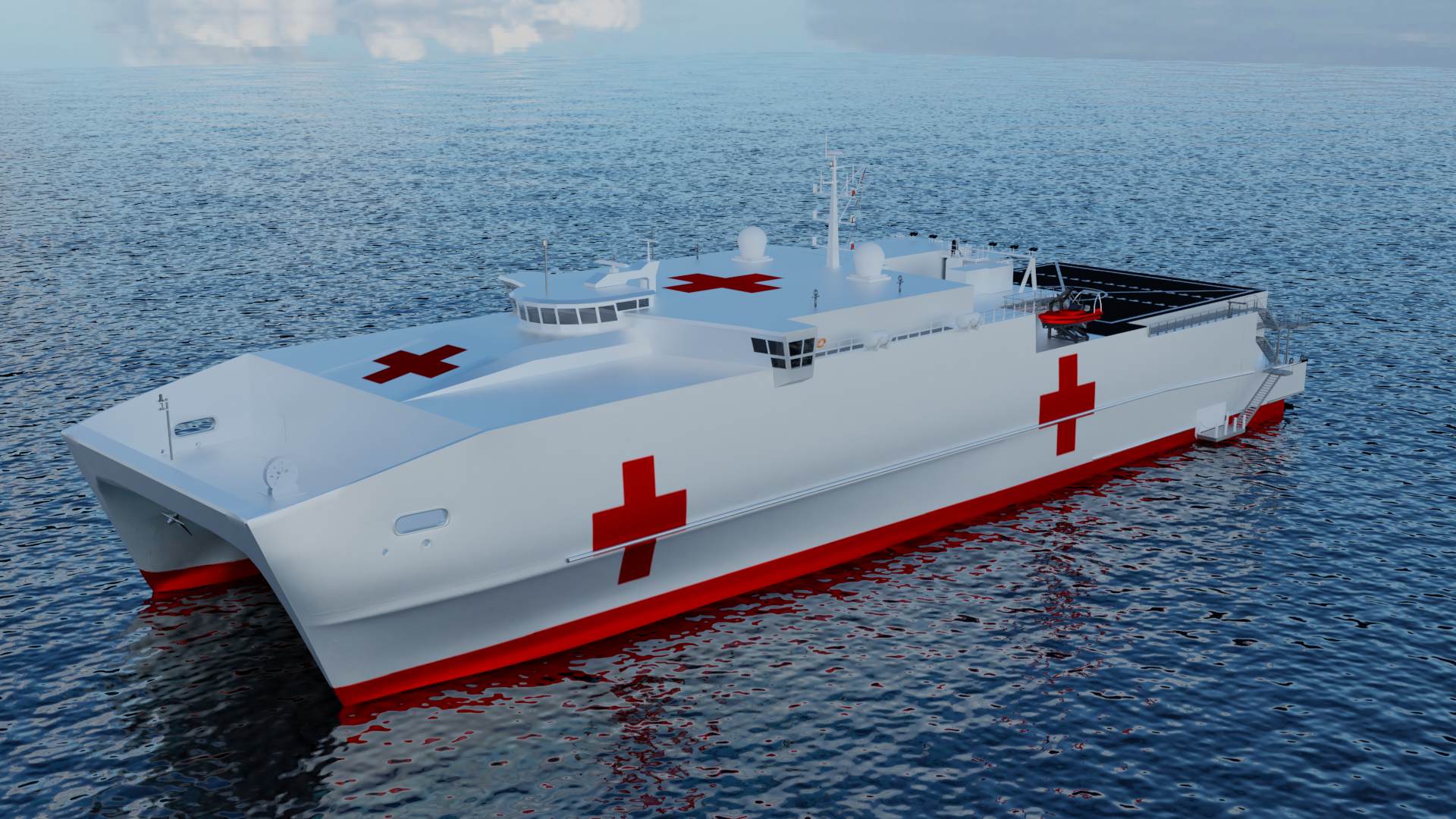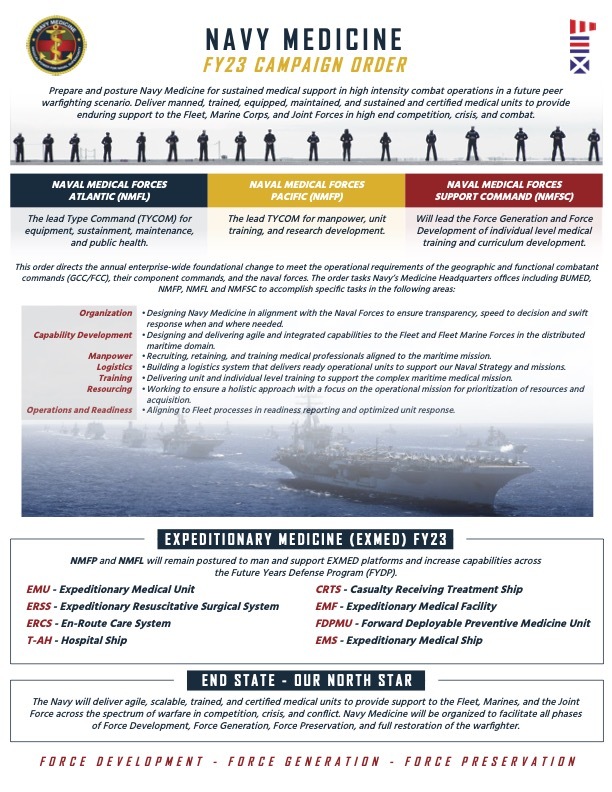
The Navy will christen the first of a new variant of the expeditionary fast transport ship with expanded medical facilities this week. The new ship comes as the service’s medicine branch starts to transform to meet the challenges of the Indo-Pacific’s vast distances.
The future USNS Cody (EPF-14) is the first of the Spearhead-class EPF Flight II, produced by Austal USA for the Navy. The new ship variety will have a limited intensive care unit in addition to a medical ward.
“Flight II EPFs will be able to stabilize postsurgical cases for evacuation without the requirement to first route them through a higher facility,” according to a January 2022 Navy release when Cody’s keel was laid.
The new type of EPF ship is fast, can sail in shallow waters and could be the key to treating troops in a war in the Pacific. The ship, as well as the other expeditionary medical ships, is one of the ways that Navy medicine is looking at new capabilities and ways to integrate with the fleet, said Cmdr. Kathleen Dagher, deputy director of Naval Medicine’s Operational Design Task Group.
The ship can pick up people from the shore but it also can take patients in from the air, Dagher said.
“And then it can provide surgical intervention, ancillary support like lab and pharmacy, it also has diagnostic capability like X-ray,” she said. “And you can also move patients because you’re functioning from the surface, and it’s a fast transport ship.”
 Navy medicine, which put out its first campaign order this year, is looking to transform in order to better respond to the requirements of combat in the Indo-Pacific region, Dagher said.
Navy medicine, which put out its first campaign order this year, is looking to transform in order to better respond to the requirements of combat in the Indo-Pacific region, Dagher said.
Over the past 20 years, combat was rooted in the conflicts in Afghanistan and Iraq. Navy medicine, which treats sailors and Marines, was able to set up a system that would allow people to be treated within the golden hour due to the closeness of medical areas and combat zones, Dagher said.
There was a 98 percent survivability rate if treated within the golden hour, which was possible due to the closeness of the combat zones to medical areas, she said. But with the shift to the maritime environment, the distances are vast.
“We’re going to have to distribute smaller, more agile forward resuscitative care and damage control surgery in order to meet where injury occurs,” Dagher said.
Navy Medicine needs to be able to distribute its assets and adjust its continuum of care for the maritime environment, something it has not had to do in many years, Dagher said.
Conversations about the shift started in 2018, Dagher said, but on Jan. 30, Navy Medicine released its first-ever campaign order. It is the first of five, with one coming out every year.
“Prepare and posture Navy Medicine for sustained medical support in high-intensity combat operations in a future peer warfighting scenario,” reads the first campaign order, according to a fact sheet. “Deliver manned, trained, equipped, maintained, and sustained and certified medical units to provide enduring support to the Fleet, Marine Corps, and Joint Forces in high-end competition, crisis, and combat.”
With the capabilities and the organization design established, Navy medicine is now moving into determining how it will function. That is the point of the five-year campaign, which includes assessment throughout, Dagher said.
Navy Medicine also has type commanders that are being built up, with that beginning in 2022, Dagher said. This includes Naval Medical Forces Atlantic, which is the lead for public health, equipment and maintenance, and Naval Medical Forces Pacific, which is responsible for manpower, training and research development, according to a fact sheet on the campaign order.
The fleet currently has eight expeditionary resuscitative surgical systems, which can be used on land or afloat. There’s a plan in place to sustain those as well as build up to the fleet’s needs, Dagher said.
The first year of the campaign order will be adjusting the mission and tasks so that they match up to the policies being put in place for the TYCOMs, Dagher said.
“And this is really the focus this year for the campaign order is enabling them,” she said. “So we’re able to have manned, trained, equipped, certified, sustained and maintained forces that are integrated with fleet concepts and speaking the same language as the maritime force.”





